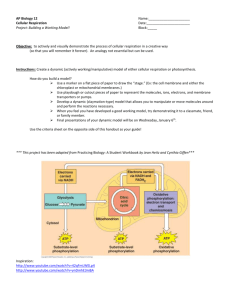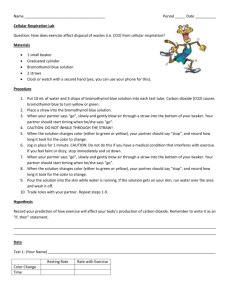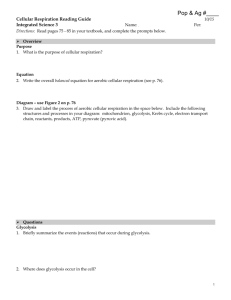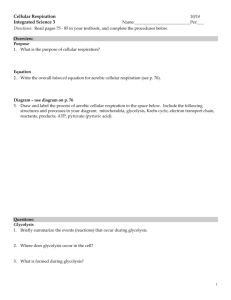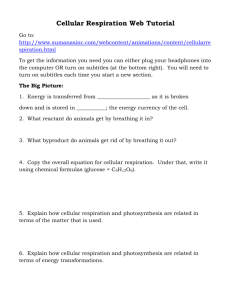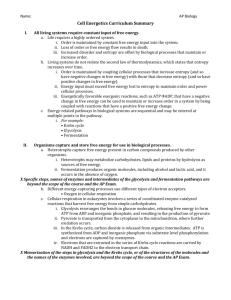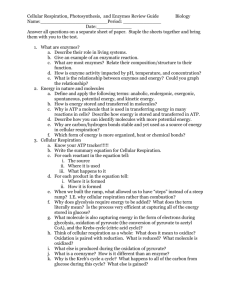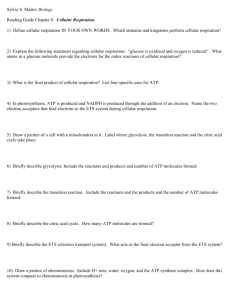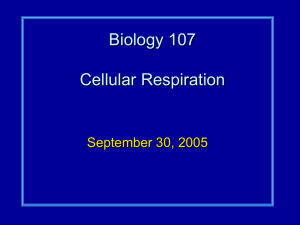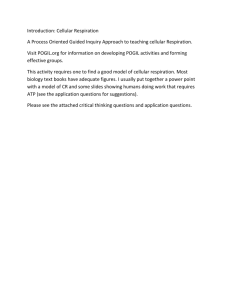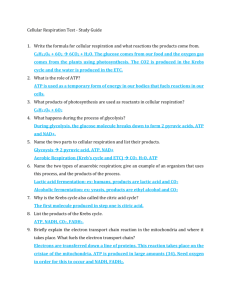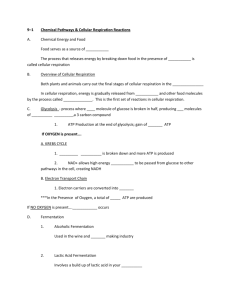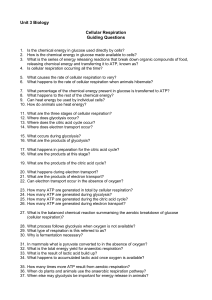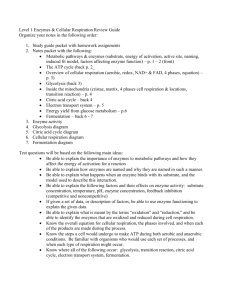Slide 1 - MisterSyracuse.com
advertisement
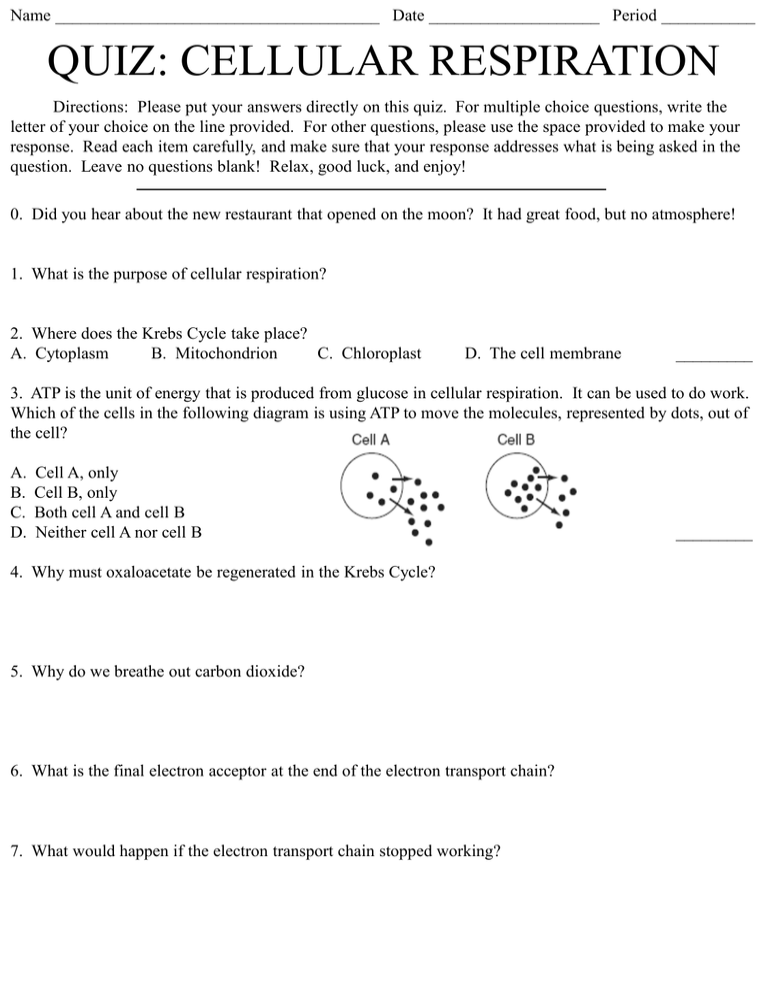
Name ______________________________________ Date ____________________ Period ___________ QUIZ: CELLULAR RESPIRATION Directions: Please put your answers directly on this quiz. For multiple choice questions, write the letter of your choice on the line provided. For other questions, please use the space provided to make your response. Read each item carefully, and make sure that your response addresses what is being asked in the question. Leave no questions blank! Relax, good luck, and enjoy! 0. Did you hear about the new restaurant that opened on the moon? It had great food, but no atmosphere! 1. What is the purpose of cellular respiration? 2. Where does the Krebs Cycle take place? A. Cytoplasm B. Mitochondrion C. Chloroplast D. The cell membrane _________ 3. ATP is the unit of energy that is produced from glucose in cellular respiration. It can be used to do work. Which of the cells in the following diagram is using ATP to move the molecules, represented by dots, out of the cell? A. B. C. D. Cell A, only Cell B, only Both cell A and cell B Neither cell A nor cell B 4. Why must oxaloacetate be regenerated in the Krebs Cycle? 5. Why do we breathe out carbon dioxide? 6. What is the final electron acceptor at the end of the electron transport chain? 7. What would happen if the electron transport chain stopped working? _________ 8. The flow of energy through an ecosystem involves many energy transfers. The diagram below summarizes the transfer of energy that eventually powers muscle activity. Which arrow represents cellular respiration? A. Arrow A, only B. Arrow B, only C. Arrows B and C D. Arrows A and B _________ 9. What molecules carry electrons around during cellular respiration? 10. While viewing a slide of rapidly moving sperm cells, a student concludes that these cells require a large amount of energy to maintain their activity. The organelles that most directly provide this energy are known as: A. Vacuoles B. Chloroplasts C. Mitochondria D. Ribosomes _________ 11. Glycolysis doesn’t actually make two ATPs, it makes four. Explain why, during the first part of the process, we need to “invest” two ATPs. You may write, draw, or both. 12. Where are protons pumped to in the electron transport chain? A. Intermembrane space B. Stroma C. Cristae D. Matrix _________ 13. How does the enzyme ATP synthase use the proton gradient produced by the electron transport chain to produce ATP? 14. If a molecule gains an electron, in BioSpeak, we do we call it what? 15. On the drawing of a mitochondrion below, use arrows and the symbol H+ to show where protons are pumped from, where they are stored, and how they get back to complete their cycle.


